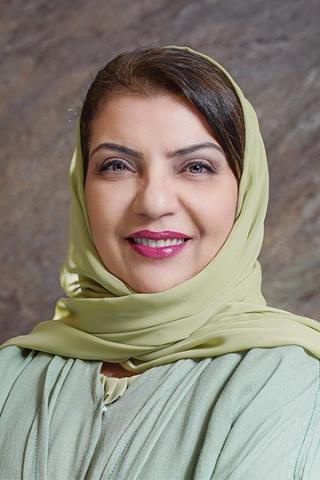Interview with Shortlisted Author Bushra Khalfan
17/05/2022

Where were you when the shortlist was announced and what was your reaction?
I was enjoying a holiday with some female friends in the USA. I woke up early to hear the result. Immediately after announcement of Dilshad, I smiled with pleasure. Afterwards, I sent congratulations to writer colleagues whose names were also on the shortlist, before going back to sleep.
You could have called the novel “Mariam Dilshad” instead of “Dilshad”, since the character of Mariam has a strong presence and the novel ends with her, living in Mutrah?
Dilshad is a person in the novel, but the title refers to him and his descendants. His characteristics are inherited by a generation of clever, stoic women who face life and its pain with a resounding laugh.
Dilshad grows up in a poor, Baluchi area of Muscat. Did you have to do research into Baluchi culture and language in preparation for writing the novel?
Yes, I did a lot of research into Baluchi culture and language before and during the writing. The research had two phases: the first was in the library, followed by field research, when I went out and met a large number of Baluchi women, particularly old women who still remember much of Baluchi oral folklore.
We can see that many characters, both men and women, are orphans, longing for a mother’s tenderness. Was the subject of motherhood important to you as you wrote the novel?
The subject of motherhood is always important to me, motherhood not only in its biological sense or role, but in how it is the origin or source of everything, how it is reflected in the relationship of peoples with the nation and with their original culture.
What is the symbolism of the laugh in the novel, the laugh passed down from Dilshad to Mariam and then Farida?
The laugh here is a reaction to the most extreme forms of pain and bewilderment. It is a tool to deal with misery in its different forms, a way of facing death, loss, sadness, misery and hunger.
Tell us about folktales and their importance in Dilshad.
Folktales are one of the ways to approach the culture of any society and its contextual references. They reflect society’s vision of itself, its value and its most important characteristics, real and imagined, both ugly and good aspects. Also, through these tales, we can gain insight into the material and psychological state of this society. For this reason, I used folktales in Dilshad to say what I wanted about cultures, without falling into the trap of writing a report. They also enabled me to highlight the richness of these numerous cultures.
Farida learns to read and write after she and her mother have fled from the Lawmeh house in Muscat and settled in Mutrah, where Mariam becomes a successful merchant. Can we see in this a victory for women and their aspirations, and does it reflect developments in Omani society of the time?
It reflects a development in how the characters view themselves as time goes on and is certainly a victory for women. It is symbolic of a change in society, and even of the importance of the role of place and culture in every Omani city.
The novel speaks about hunger and its psychological effects on people, besides its physical effects. Are these wounds which will never be healed?
At one point in the novel, Mariam Dilshad says that hunger is like an illness which stays in the blood. The symptoms of hunger may disappear, but its psychological effects remain, deep and hidden. Within that dungeon of hunger, societies develop in a certain way, due to scarcity and the struggle to remain alive, and social classes form as a result. Hunger results in illnesses which can only be cured after years of the stomach being full.
The novel speaks about Fardous’s cruelty to Mariam and Farida: “who knows if this is what wealth and fullness do to the soul? That connection through blood turns into a bag of money, and milk is merely a number of pennies to be counted?” (page 324). This cruelty is not evident in the poor districts of Muscat and Mutrah. Was this deliberate?
Cruelty is present in the human soul and in all societies, even if its causes and manifestations vary. Fardous’s cruelty was outwardly shown through money, but inwardly, it stemmed from emotional poverty. The cruelty of the districts of Muscat are seen outwardly through hunger, but on the inside people feel a lack of security. You can look at cruelty from many perspectives, and it can’t be restricted to a single culture, environment or class. But Mariam looks at things from her own perspective, through her experience in the Lawmeh house, and with Fardous in particular.
What does the sea symbolize in the novel?
The sea has multiple and perhaps contradictory symbolic meanings. The sea is absence, new opportunity, adventure with its latent challenges. It is a fresh new lease of life through changes in time and place.
Will we read more about the life of Farida in the sequel to Dilshad?
I am not sure where Farida is going to take us, but I can say confidently that I know her well and I know that she is the daughter of Mariam Dilshad, and whoever has known Mariam can imagine what Farida will be in the second part of Dilshad.
